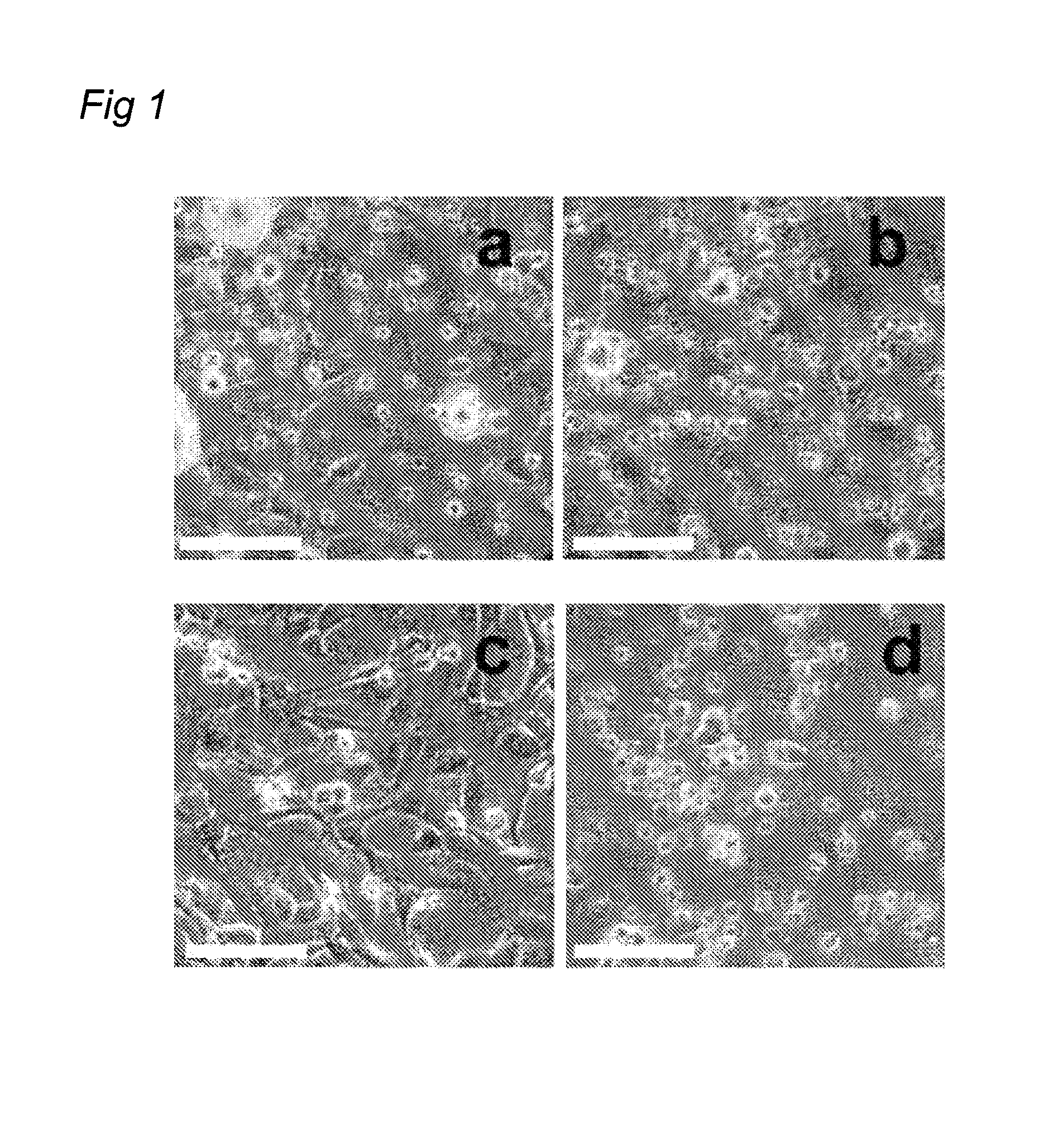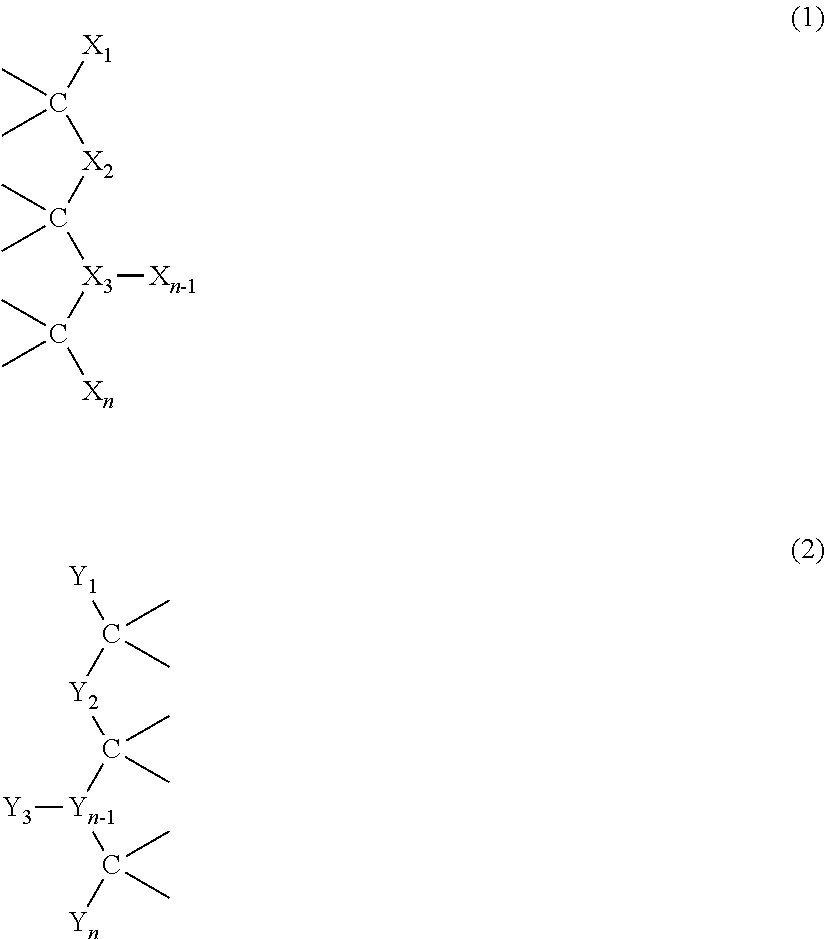Modular bioresorbable or biomedical, biologically active supramolecular materials
a bioresorbable or biomedical, biologically active technology, applied in the direction of prosthesis, catheter, surgery, etc., can solve the problems of high processing temperature, complex chemistry, and immunological responses, and achieve the effect of changing the specific biofunctionality
- Summary
- Abstract
- Description
- Claims
- Application Information
AI Technical Summary
Benefits of technology
Problems solved by technology
Method used
Image
Examples
example 1
Preparation of UPy1
[0115]1,6-Hexyldiisocyanate (650 g) and methylisocytosine (or 2-amino-4-hydroxy-6-methyl-pyrimidine, 65.1 g) were suspended in a 2-liter flask. The mixture was stirred overnight at 100° C. under an argon atmosphere. After cooling to room temperature, a liter of pentane was added to the suspension, while stirring was continued. The product was filtered, washed with several portions of pentane and dried in vacuum. A white powder was obtained. 1H NMR (400 MHz, CDCl3): δ 13.1 (1H), 11.8 (1H), 10.1 (1H), 5.8 (1H), 3.3 (4H), 2.1 (3H), 1.6 (4H), 1.4 (4H). FT-IR (neat): κ (cm−1). 2935, 2281, 1698, 1668, 1582, 1524, 1256.
example 2
Preparation of UPy2
[0116]2-Amino-4-hydroxy-5-(2-hydroxy ethyl)-6-methyl-pyrimidine (12 gram) was suspended in IPDI (150 mL) and was stirred overnight at 90° C. under an argon atmosphere. A clear solution developed. The solution was cooled and precipitated in hexane. The solid was filtered, stirred in another portion of hexane, and then the product was isolated by filtration, washing with hexane and drying of the residue. Yield: 98%. 1H NMR (400 MHz, CDCl3): δ 13.1 (1H), 11.9 (1H), 10.2 (1H), 4.8-4.5 (1H), 4.2 (2H), 4.0-3.2 (3H), 3.1-2.9 (3H), 2.7 (2H), 2.3 (3H), 1.9-1.6 (4H), 1.4-0.8 (26H). FT-IR (neat): κ (cm−1) 2954, 2254, 1690, 1664, 1637, 1590, 1532, 1461, 1364, 1307, 1257, 1034, 791. MALDI-TOF-MS, [M+]=614, [M+Na+]=636.
example 3
Preparation of UPy3
[0117]A mixture of methylisocytosine (10 g) and carbodiimidazole (20.7 g) in dried DMSO (50 mL) was heated and stirred at 100° C. under an argon atmosphere for 2 hours. The resulting solid was filtered and washed with dry acetone until a white powder remained in the filter that subsequently was dried in vacuo and stored over P2O5. FT-IR (neat): κ (cm−1) 3174, 1701, 1644, 1600, 1479, 1375, 1320, 1276.
PUM
| Property | Measurement | Unit |
|---|---|---|
| molecular weights | aaaaa | aaaaa |
| elongations | aaaaa | aaaaa |
| elongation at break | aaaaa | aaaaa |
Abstract
Description
Claims
Application Information
 Login to View More
Login to View More - R&D
- Intellectual Property
- Life Sciences
- Materials
- Tech Scout
- Unparalleled Data Quality
- Higher Quality Content
- 60% Fewer Hallucinations
Browse by: Latest US Patents, China's latest patents, Technical Efficacy Thesaurus, Application Domain, Technology Topic, Popular Technical Reports.
© 2025 PatSnap. All rights reserved.Legal|Privacy policy|Modern Slavery Act Transparency Statement|Sitemap|About US| Contact US: help@patsnap.com



